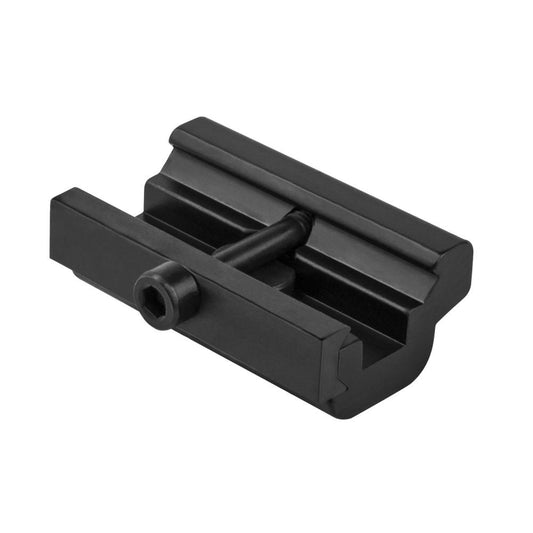

Constructed for robust performance, the NcStar Mil-STD 1913 Rail-Mounted Sling Swivel Stud / Bipod Adapter provides a dependable mounting point for slings and bipods. This accessory is designed for both novice and experienced shooters, enhancing stability and control during tactical shooting or outdoor competitions. Its low-profile design integrates seamlessly with your firearm, ensuring that you maintain optimal performance without unnecessary bulk.
Made from durable black anodized aluminum, this adapter is built to withstand demanding outdoor conditions. It mounts securely to most Weaver and Picatinny MIL-STD 1913 type rails, offering versatility and reliability. This solid accessory not only supports your shooting accuracy but also boosts your confidence out in the field.
Key Features:
- SECURE MOUNTING for reliable attachment of slings and bipods, enhancing stability for improved accuracy.
- DURABLE CONSTRUCTION made from black anodized aluminum, ensuring long-term performance in rugged conditions.
- LOW PROFILE DESIGN minimizes bulk, allowing for a sleek and streamlined firearm setup without sacrificing functionality.
- EASY INSTALLATION includes a mounting tool, facilitating quick setup and adjustments for all skill levels.
- WIDE COMPATIBILITY mounts to most Weaver and Picatinny MIL-STD 1913 rails, offering versatility for different firearms.
- LIGHTWEIGHT at just 2.1 oz, this adapter adds minimal weight to your firearm, making it ideal for tactical scenarios.
- ENHANCED STABILITY promotes better shooting posture, helping you maintain focus on your target.
- PERFECT FOR HUNTERS works great in low-light situations, ensuring you can secure your target at dusk.
Technical Specifications
| Feature | Details |
|---|---|
| Length | 1.9 inches |
| Width | 1.2 inches |
| Weight | 2.1 oz |
| Material | Black Anodized Aluminum |
| Compatibility | Weaver/Picatinny MIL-STD 1913 Rails |
What’s in the Box?
- 1 x NcStar Mil-STD 1913 Rail-Mounted Sling Swivel Stud / Bipod Adapter
- 1 x Mounting Tool
Customer Reviews
"This adapter is a game changer for my shooting setup. It holds everything securely and feels really durable!"
"I love how lightweight it is—perfect for my hunting trips!"
"Installation was a breeze, and it fits my rifle perfectly. Highly recommend for anyone needing a solid mount!"
FAQ
How does the NcStar Mil-STD 1913 Rail-Mounted Sling Swivel Stud / Bipod Adapter perform in different weather conditions?
This adapter is constructed from anodized aluminum, which provides excellent resistance to corrosion and wear, making it suitable for various weather conditions. Just ensure regular maintenance to keep it in top shape.
Can I use this adapter with any sling or bipod?
While the adapter is versatile and fits most Weaver/Picatinny rails, it specifically accommodates slings and bipods designed for swivel stud attachments, ensuring optimal compatibility.
Is the adapter easy to install?
Yes, the NcStar Mil-STD 1913 Rail-Mounted Sling Swivel Stud / Bipod Adapter comes with a mounting tool, making installation quick and straightforward even for beginners.
Similar Models
Looking for more versatile firearm accessories? Explore our extensive NcStar lineup, including tactical bipods and additional rail-mounted products tailored for your shooting needs. Whether you're enhancing your rifle setup for precision shooting or looking for reliable outdoor gear, we have everything you need.
You May Also Like
Here’s some of our most similar products people are buying. Click to discover trending style.






